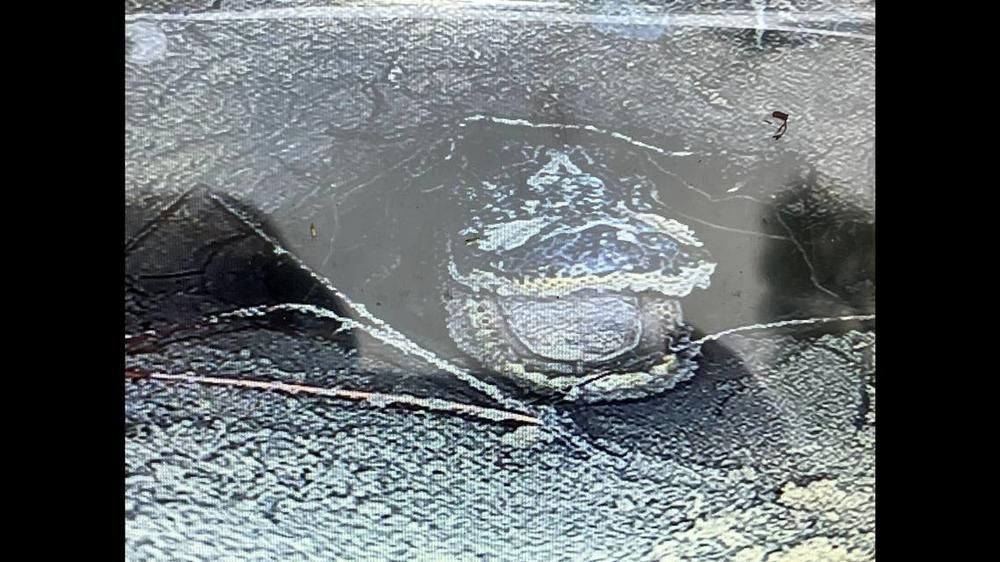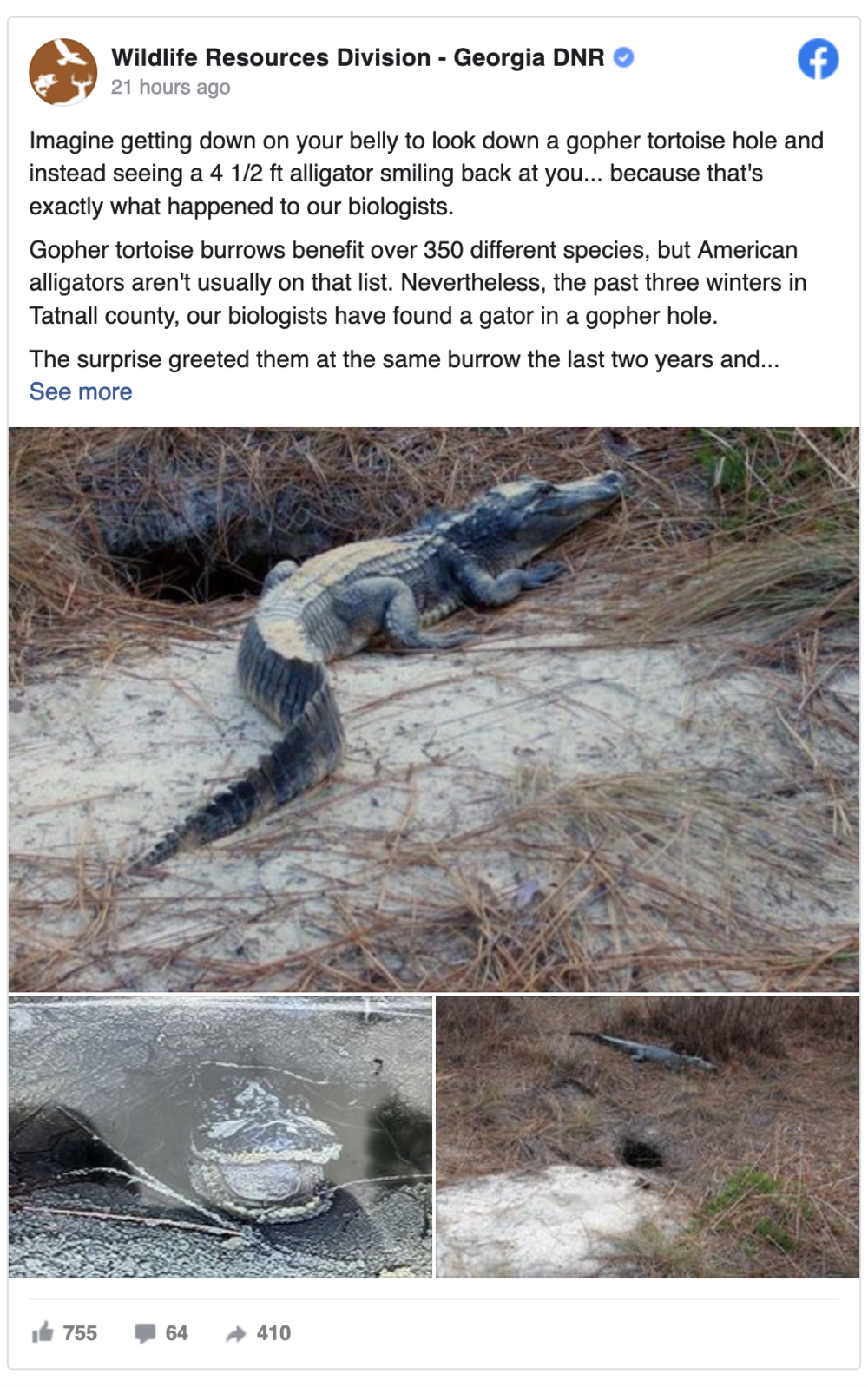
Caption
Camera sent into gopher tortoise burrow discovers an alligator is hiding inside, Georgia biologists said.
Credit: Georgia Wildlife Resources Division photo

Camera sent into gopher tortoise burrow discovers an alligator is hiding inside, Georgia biologists said.
Beware of turtle holes in Georgia — because they could be hiding large alligators, the Georgia Wildlife Resources Division says.
That discovery was made the hard way when biologists studying gopher tortoises peeped into a seemingly innocent burrow in Tattnall County, about 60 miles west of Savannah.
“Imagine getting down on your belly to look down a gopher tortoise hole and instead seeing a 4 1/2 ft alligator smiling back at you ... because that’s exactly what happened to our biologists,” the state wrote in a March 21 Facebook post.
“Gopher tortoise burrows benefit over 350 different species, but American alligators aren’t usually on that list.”
The odd game of hide-and-seek has played out the last three winters in Tattnall County, officials said, and the gator hasn’t always been found in the same hole.
Wary biologists recently decided to install a game camera in the area, hoping to learn how a large alligator was squeezing itself into a tight gopher tortoise hole. So far, all they’ve gotten is footage of an alligator sunning itself outside one of the burrows.
“The big reptile didn’t dive for the hole, and even seemed reluctant to go in, which leads our biologists to believe that the gator slides in backwards,” the division reported. “Which makes sense when you think about it: For an animal almost 5 feet long, turning around in a tortoise tunnel would be trouble.”

It’s common for alligators to spend winter in holes, but they are usually along waterways, state biologists said. In this case, the gopher tortoise hole is more than 800 yards from “a significant water source.”
“In between is rugged, fire-suppressed sandhills scrub, as well as other tortoise burrows, so why does this gator travel so far to use this hole?” biologists asked.
“Our biologists speculate there’s memory involved. The alligator can’t be following last year’s scent trail, so we can only assume it’s remembering that’s the place to go. Alligators have been spotted in gopher burrows at least twice before in Georgia. Yet both were near wetlands, and neither involved a burrow used multiple years in a row.”
The alligator has inspired biologists to keep checking the burrow to see if tortoises are still using it — when the alligator is not around.
“It’s still a work in progress in certain respects to fully understand what’s going on with this burrow, and with this gator,” state officials said.
Gopher tortoises average 9 to 11 inches in length, but their burrows can extend 15 feet on average, according to the Florida Fish and Wildlife Conservation Commission. However, some burrows extending 40 feet have been found.
This story comes to GPB through a reporting partnership with The Telegraph.